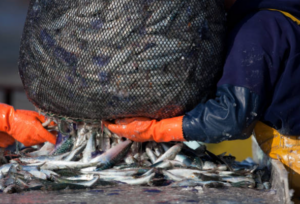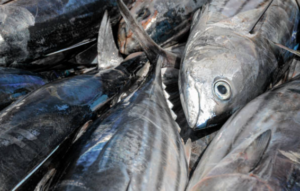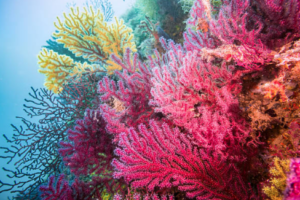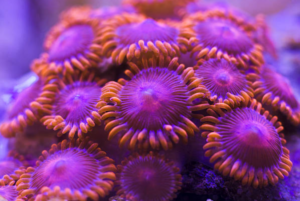How It Threatens Biodiversity in Our Oceans

Our oceans are Earth’s lifeblood, encompassing over 70% of the planet’s surface. They are vast, mysterious, and home to an astonishing array of life forms, many of which remain undiscovered and undocumented. The oceans, with their breathtaking beauty and immeasurable biodiversity, are far more than just aquatic expanses – they are integral to the health and balance of our planet. These vast bodies of water play a pivotal role in regulating Earth’s climate, providing sustenance to billions of people, inspiring art and culture, and offering a source of profound awe and inspiration for humanity.
As repositories of life, oceans are inhabited by an incredible variety of species, from the smallest plankton to the largest whales, and everything in between. These marine ecosystems are intricately interconnected, forming a delicate web of life where each species plays a vital role. From the colorful corals of tropical reefs to the icy depths of polar seas, our oceans are teeming with wonders waiting to be explored, studied, and appreciated.
However, beneath the shimmering surface and the remarkable diversity of marine life lies a perilous crisis that threatens these precious ecosystems and the myriad creatures that call them home. This crisis is overfishing – a practice that relentlessly exploits our oceans beyond their natural capacity to regenerate. Overfishing is not just a challenge; it is an environmental catastrophe that jeopardizes the future of marine life and the health of our planet.
The Overfishing Crisis
Causes of Overfishing
1. Technological Advances: Modern fishing vessels are equipped with advanced technologies like sonar, satellite navigation, and radar, enabling fishermen to locate and catch fish more efficiently. These technological advancements have contributed to the overexploitation of fish stocks.
2. Lack of Regulation: In many parts of the world, fishing industries operate with minimal regulations and oversight. This lack of governance allows for rampant overfishing, as there are no strict limits on catch size or the use of destructive fishing practices.
3. Market Demand: High market demand for certain species, such as bluefin tuna and shrimp, incentivizes fishermen to catch them in large quantities, often at the expense of sustainable practices.
4. Subsidies: Government subsidies for the fishing industry can lead to overfishing by making it financially viable for fishing operations to continue despite diminishing fish populations.
The Impact on Biodiversity
Disruption of Food Chains
Overfishing disrupts the natural food chains in marine ecosystems in various ways:
- Predator-Prey Dynamics: Overfishing can lead to the depletion of predatory fish species, which are vital for controlling the populations of smaller prey species. This results in the unchecked proliferation of these prey species, often disrupting the balance of the entire ecosystem.
- Altered Predation Patterns: With fewer top predators, prey species can experience shifts in their behavior and population dynamics. This can impact their interactions with other species, leading to further ecological changes.
- Indirect Effects: Overfishing can have ripple effects throughout the food web. For example, the decline of a predator can lead to an increase in herbivores, which in turn can overgraze seafloor vegetation like seagrass beds and kelp forests.
Altered Habitats
Overfishing contributes to habitat destruction and the degradation of critical ecosystems:
- Bottom Trawling: This destructive fishing method involves dragging heavy nets across the ocean floor. It not only captures target species but also demolishes sensitive habitats like coral reefs, seafloor communities, and marine vegetation. The destruction of these habitats can take decades or even centuries to recover, if they recover at all.
- Coral Reefs: Overfishing can indirectly harm coral reefs by reducing the populations of herbivorous fish that help control algal growth. When algal growth goes unchecked, it can smother and kill corals.
- Kelp Forests: Kelp forests, which provide essential shelter and food for many marine species, are at risk when herbivores and other key species are overfished. This can disrupt the entire ecosystem, affecting species from sea urchins to sea otters.
Species Extinction
Overfishing places many fish species at risk of extinction:
- Population Vulnerability: As fish populations are depleted, they become more vulnerable to other threats, such as pollution, climate change, and habitat destruction. Small populations are less resilient and struggle to recover.
- Slow Reproduction: Many large fish, such as sharks, have slow reproduction rates. They produce fewer offspring, which makes it challenging for their populations to rebound once they’ve been overfished.
- Bycatch and Collateral Damage: Bycatch, which occurs when non-target species are unintentionally caught in fishing nets, results in the death of numerous marine creatures, further contributing to species declines.
- Ecosystem Disruption: The loss of key predator species due to overfishing can have cascading effects on entire ecosystems. For example, the disappearance of sharks can lead to a population boom in their prey, like rays and skates, which can subsequently impact smaller species and their habitats.

The Economic and Societal Consequences
The consequences of overfishing go beyond just environmental impacts. There are also significant economic and societal consequences to consider.
Loss of Livelihoods
Many coastal communities around the world rely on fishing for their livelihoods. As fish populations decline, these communities face economic hardships and may struggle to put food on their tables.
Food Security
Over 3 billion people depend on fish as a primary source of protein. Overfishing threatens global food security and exacerbates malnutrition and hunger, particularly in developing countries.
Conservation Efforts and Solutions
Addressing the overfishing crisis requires a multi-faceted approach involving various stakeholders, from governments to consumers and organizations. Here are detailed solutions and conservation efforts:
Sustainable Fishing Practices
- Implement Catch Limits: Governments and fisheries management organizations can establish and enforce catch limits to ensure that fishing operations do not deplete fish populations beyond their capacity for recovery. These limits should be based on scientific assessments of fish stocks.
- Promote Selective Fishing Gear: Encouraging the use of more selective fishing gear can reduce bycatch. Innovations like circle hooks and turtle excluder devices (TEDs) help minimize unintentional capture of non-target species.
- Seasonal Closures: Temporarily closing fishing areas during critical reproductive or migration seasons allows fish populations to recover and ensures the sustainability of fisheries.
- Protect Breeding Grounds: Identifying and safeguarding breeding and spawning grounds is crucial. These areas are often targeted by fishing operations and need special protection to support fish population recovery.

Marine Protected Areas (MPAs)
- Designating MPAs: Governments can establish marine protected areas to safeguard biodiversity and promote the recovery of fish stocks. These areas limit or prohibit fishing to allow ecosystems to regenerate.
- Benefits of MPAs: MPAs have been shown to lead to increases in fish populations both inside and outside the protected areas. They also help preserve critical habitats like coral reefs and seagrass beds.
- Global Network of MPAs: A global network of well-managed MPAs can significantly contribute to ocean conservation and protect migratory species that traverse international waters.
Consumer Choices
- Support Sustainable Seafood: Consumers can make a difference by choosing sustainably sourced seafood. Look for certifications like the Marine Stewardship Council (MSC) label, which indicates that the seafood has been responsibly caught.
- Educate Yourself: Become informed about the seafood you consume. Apps and websites like Seafood Watch provide up-to-date information on the sustainability of different fish species.
Supporting Policy Changes
- Advocate for Stronger Regulations: Citizens and organizations can lobby for stricter fishing regulations, increased monitoring and enforcement, and the elimination of harmful subsidies that encourage overfishing.
- Transparency and Traceability: Push for more transparency in the seafood supply chain. Traceability and labeling systems help consumers and retailers make responsible choices.
- International Cooperation: Overfishing is a global issue. Encourage international cooperation through organizations like the United Nations and regional fisheries management organizations to establish and enforce conservation measures on a global scale.

Education and Awareness
- Public Outreach: Raising awareness about the impacts of overfishing is vital. Education campaigns, documentaries, and social media can help inform the public about the importance of ocean conservation.
- Youth Engagement: Involving young people in marine conservation efforts is critical for the future. Schools, universities, and youth organizations can play a role in educating and engaging the next generation of environmental stewards.
- Community Involvement: Local communities, particularly in coastal regions, can take action to support sustainable fishing practices and advocate for the preservation of their marine resources.
The overfishing crisis is a significant threat to biodiversity in our oceans. It disrupts ecosystems, leads to species extinction, and has far-reaching economic and societal consequences. However, there is hope. By adopting sustainable fishing practices, creating marine protected areas, making responsible consumer choices, supporting policy changes, and spreading awareness, we can work towards preserving the incredible biodiversity of our oceans. Our actions today will determine whether we leave a legacy of a thriving and diverse marine environment for future generations or a barren, overexploited ocean. It’s time to make a change and protect our oceans from the devastating effects of overfishing.

